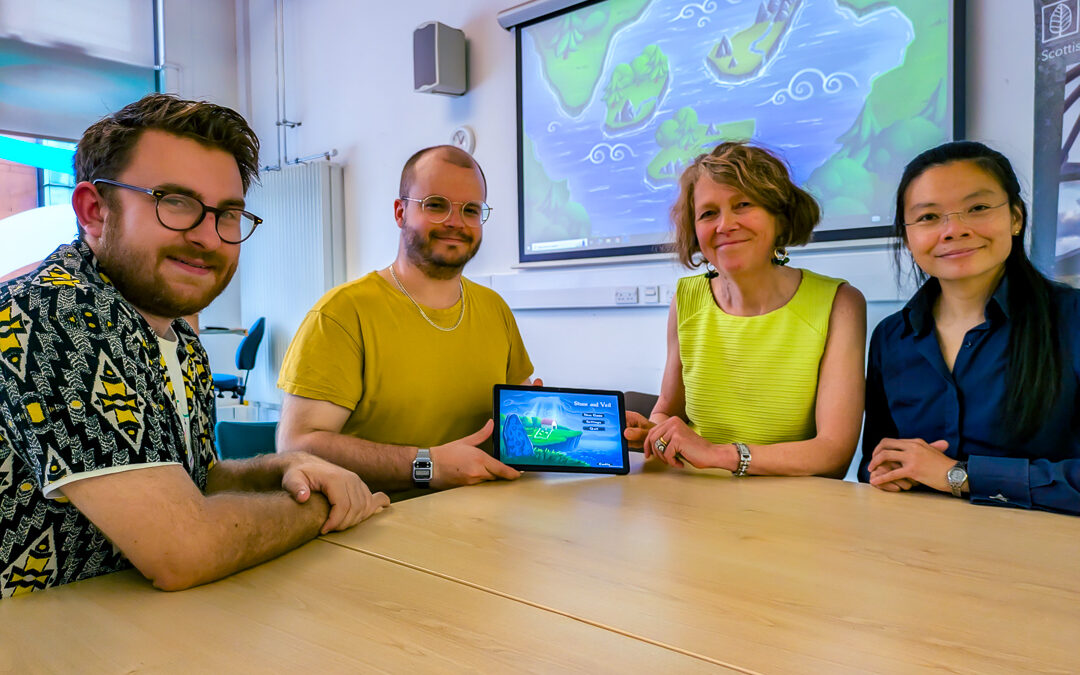A Pictish history-inspired videogame created by students in Dundee will be used to educate people on soil health and land use.
Stone & Veil, set in Northeast Scotland, draws on the region’s unique mythology, and tells the story of how human activities can impact the natural environment.
The ‘engaging real-time strategy and resource management game’ was created by students from Abertay University’s Professional Masters in Games Development.
They worked with the Scottish Ecological Design Association (SEDA) and scientists from the James Hutton Institute and SEFARI Gateway to create the game, designed for tablets or smartphones.
The brief set for the team was to help raise awareness and enhance understanding of land use for people who may not be familiar with the topics and the pivotal role of the land in our daily lives.
By focusing on sustainable ecology, the game gives players a better understanding of how land is deployed and consequences for the future.
It also highlights the complex value of land use and the impact of different forms of production on soil health.
As part of their research, the game development team visited the nearby Ardblair Standing Stones and walked part of the Cateran Trail.
The Picts, descendants of Iron Age people, emerged some 1,700 years ago in what is now northeastern Scotland — known in some sources as Pictavia, or Pictland. Known as ‘Picti’, the ‘painted ones’, by the Romans, they went on to dominate northern and eastern Scotland until late first millennium AD.
Stone & Veil will be showcased at conferences and outreach events and hosted on the SEDA Land section of the SEDA website.
Marcus Young-Smith, Abertay student, said: “Working on Stone & Veil has been a great learning experience for the team, and we’ve gained a lot of valuable insights throughout the process, from discussing and agreeing the client brief, through to planning, designing and delivering the finished product. I hope that Stone & Veil can help people of different generations to engage with this important topic and the excellent work led by SEDA Land, the James Hutton Institute and SEFARI Gateway.”
SEDA Land is a Scottish-registered charity focused on promoting a cultural shift in how we use and value land in Scotland with a view to achieving both a healthy ecology and a a dynamic economy. It does this mainly by bringing together leading ecologists, scientists, land managers, and industry leaders, as well as artists, musicians, poets, and storytellers to consider all aspects of rural life – including biodiversity, climate, housing, communities, employment and health.
Gail Halvorsen, founder of SEDA Land, said: “We have thoroughly enjoyed working with the Abertay team on the development of ‘Stone & Veil’. It has been a fascinating experience, not least because of what it has taught us about the complexities of games development. SEDA Land is always on the lookout for new ways of reaching new audiences who might not normally engage with ecological issues, and we are very optimistic that this exciting game will capture the imagination of young Scots.”
Professor Lorna Dawson, senior soil scientist at the James Hutton Institute, and knowledge exchange lead for environment at SEFARI Gateway, said: “The game has in-built information about soil, farming and the environment, where the player can gain knowledge of land use change through interactive decision-making play. It is also designed to offer exciting challenges through contact with climatic events or the appearance of mythical creatures – both good and bad.”




